Located 50 km southwest of Tabriz, Kandovan is one of the one of the most fascinating villages of Iran. It is located 18 km south of Osku, on the green slopes of Sultan Daghi. According to the general population and housing census of 2006, this village has 137 families and 601 people who live on agriculture, animal husbandry and handicrafts. Kandovan’s fame is due to the existence of man-made cave settlement within the conical and pyramidal beehive-shaped rock formations. The inhabitants of Kandovan have built their houses, stables, warehouses and workshops inside the rock.
Kandovan Village – Introduction
Kandovan village is one of the most famous and amazing natural and cultal attractions of East Azarbaijan province in Iran. The village of Kandavan is the only “inhabited rocky village” in the world. There are two other similar villages, one of which is in Cappadocia, Turkey, and the other is in Dakota, America, but with the difference those are uninhabited.
The historic village of Kandavan with a history of over a thousand years is located in Osku county, 70 km from Tabriz.
The beehive or sugarloaf-shaped houses of this village are located in the heart of the mountain, which are completely the result of a natural volcano and were formed without any human intervention.
One of the most striking features of Kandovan is its geological marvel. The village is carved into the volcanic rock formations that characterize the region. Over millions of years, the volcanic ash and debris from Mount Sahand, an extinct volcano, have solidified into tuff, a soft, easily excavated rock. The inhabitants of Kandovan have taken advantage of this natural wonder by chiseling homes directly into the rock, creating a unique and surreal landscape.
Kandovan is not merely a historical relic; it is a living, breathing village where people continue to practice age-old traditions. The residents of Kandovan have taken great care to preserve their unique way of life and the village’s distinctive architecture. They pass on the knowledge of rock carving from one generation to the next, ensuring that the ancient skills are not lost to time.
Also Read : Zagros Mountains
History of Kandovan Village
Kandovan’s history is as captivating as its architecture. The village is believed to have been inhabited for over 700 years, with some sources suggesting that it could be even older. Its roots are intertwined with the migration of Turkic tribes to the region, and Kandovan has witnessed centuries of cultural exchange and adaptation.
The village was probably established in the late 13th or 14th century AD, though some researches of archaeology even estimate the dwellings’ dated back to 7,000 years ago.
It is believed that a tribe called the “Hileh Var” fleeing Mongol invasions used the Kandowan cliffs as a refuge – and safe haven by keeping dwellings cool in winter and warm in winter. These inhabitants are thought to have decided to stay on permanently, turning the area into a settled village which is still occupied.
The cliffs have shaped hive cells which are also known as ‘Karan’. Every room of the cliff houses is carved out of rock, with earlier inhabitants making windows for the rooms and later decorating them with colorful glasses.
Rock Architecture of Kandovan
Rock architecture indicates scenes of human struggle with nature and the use of natural rocks. In ordinary architecture, gypsum, lime and clay form the main body of the building. While in rock architecture, the desired space is hewn into the rock mass and the stone.
The dwellings in Kandovan are more than just houses; they are architectural wonders that have been passed down through generations. The homes are not only carved into the rock but are also multi-storied, often featuring multiple rooms and even kitchens. The rock provides natural insulation, keeping the interiors cool in the scorching summers and warm in the frigid winters, making these homes remarkably energy-efficient.
Interestingly, some of the houses in Kandovan have been converted into cozy guesthouses, allowing visitors to experience the extraordinary lifestyle of the villagers firsthand. Staying in one of these homes is like stepping back in time while enjoying modern amenities.
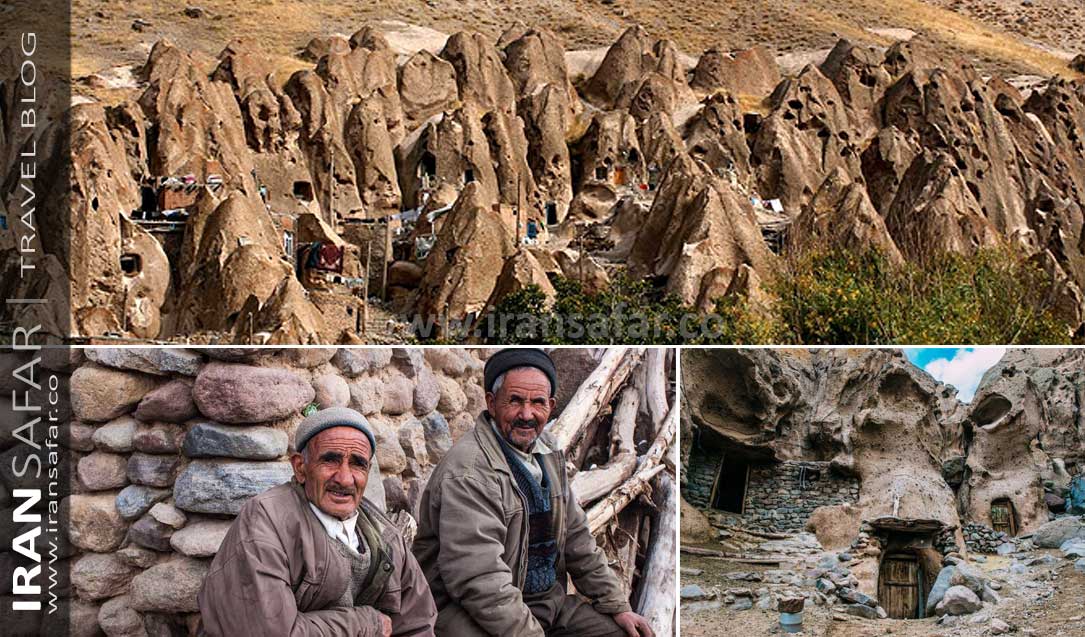
Due to the volcanic interactions of Sahand Mountains; a view has been created in one of the most pleasant and airy parts of Iran, which seems more like a dream. Molten lava has leaked from the craters of the Sahand volcano and other surrounding volcanic mountains for thousands of years. These lavas have accumulated over the centuries and gradually a crust of rock has formed on them. Dozens of multiple, pair, single, conical and spindle-shaped borders; It has embodied one of the best natural landscapes in Iran.
Volcanic molten masses and lavas have been deformed and bounded by winds and storms over thousands of years. Gradually, the less hard parts of the edges are shed and the harder parts remain, creating the current situation that is more like a natural miracle. Excessive wind and rain, especially in the borders of the entrance area of the village, are more effective and cause a lot of damage to them, while in the east and the end of the village, due to the high hills, the borders remain higher and healthier.
Kandovan has a mosque, public Persian Hammam (bath), school and a mill. Houses generally have two floors, and in some cases three or even four floors.
Exploring Kandovan
As you wander through the winding, narrow alleys of Kandovan village, you’ll discover more than just rock-carved houses. The village boasts a picturesque landscape, with lush greenery, babbling brooks, and towering mountains providing a stunning backdrop. Take a leisurely hike to the nearby hills for panoramic views of the village, or enjoy a picnic by the pristine streams that flow through the area.
Kandovan is also famous for its handicrafts, including intricate rugs and carpets woven by the local artisans. Visitors can watch these skilled craftsmen at work and even purchase their beautiful creations as souvenirs.
Kandovan and Cappadocia
kandovan resembles a Turkish town called Göreme located in Cappadocia region.
One of the remarkable points of kandovan village is being alive; which other similar places in Turkey and in the US are not.
Kandovan is one of the three rocky villages in the world and boasts its name alongside Cappadocia in Turkey and Dakota in America, but what distinguishes this village from its peers is the dynamism and being alive. dDespite all the difficulties and hardships, inhabitants never left their ancestral village.
Best time to visit Kandovan Village
Although Kandavan village in Tabriz is inhabited peacefully all year round, the best time to travel to this area is from April to November. Winter may be accompanied with snow fall, making it difficult to reach or to explore the village.
How to get to Kandovan Village
Kandovan is located on the mountain flank of Sultan Daghi, located in East Azerbaijan Province, Iran. The nearest city is Tabriz. Kandovan is approximately 60 km from Tabriz (around one hour drive via Route 21), making it a great destination for a day trip.
The easiest way to get there is by car. Also there are mini-busses to Osku, the closest town to Kandovan. They depart from Railway Square in Tabriz (slightly far out from the main centre). After reaching Osku, you’ll then need to take a taxi or get on Kandovan mini-buses to reach the village – a 20 minute scenic ride through rocky hills.
Where to Stay at Kandovan?
If you decide to stay at Kandovan village, you have three options:
Camping in the village: if you have the necessary facilities, you can experience a fun and memorable night by camping in the park near the village. Be advised that the nights in Kandavan are quite cool and you should bring warm clothes, even in summer.
Hotel: This option is suitable for those who want more facilities and a neater stay. Kandavan Laleh Rocky Hotel is the only hotel in Kandavan village that has facilities such as breakfast buffet, restaurant and coffee shop. This rocky hotel is built in the same rocky style at the heart of the mountain.
Ecolodge: Those who want to experience the reality of a rural life, can stay in ecolodges. Tural, Dariush, Homa, Sahand, Kurdi Gonesh, Moulai, and Aslani ecolodges received the most points from recent tourists.
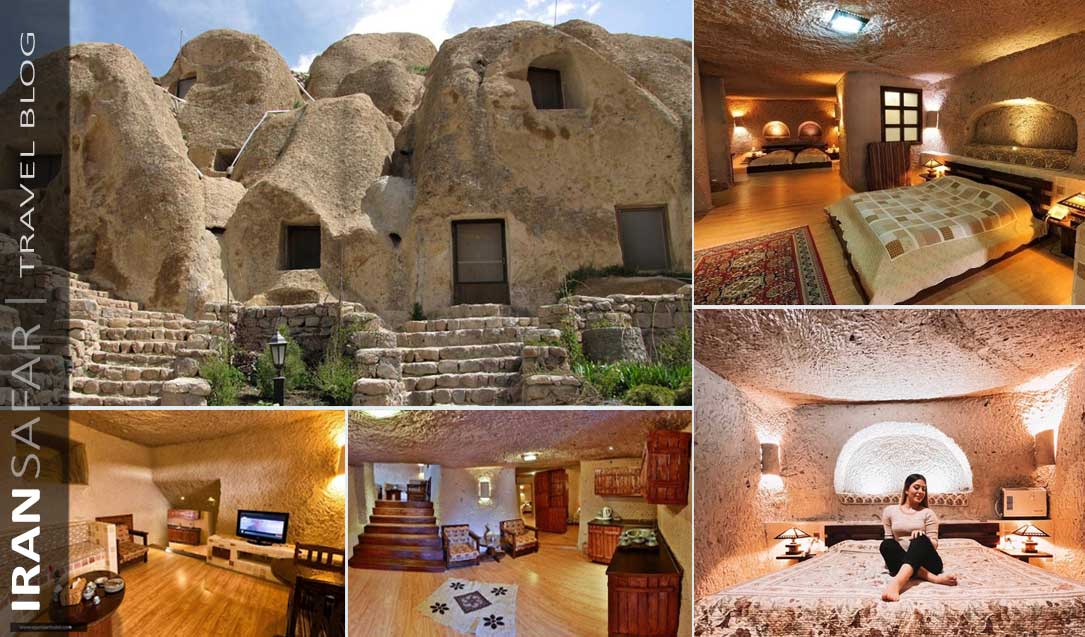 Kandovan Laleh Rocky Hotel
Kandovan Laleh Rocky Hotel
Kandovan Village – FAQs
Q: What is Kndovan famous for?
A: Kandovan village in Tabriz, Iran, stands out as a unique tourist destination due to its captivating “rocky” architecture, often likened to Cappadocia in Turkey. This fascinating village boasts dwellings carved into naturally occurring cone-shaped rock formations, creating an otherworldly landscape that is a photographer’s dream.
Q: How can I get to Kandovan village from Tabriz city center?
A: To reach Kandovan village from Tabriz city center, you can hire a taxi, use a local tour operator, or rent a car for a scenic drive of approximately 60 kilometers. The journey offers stunning views of the Iranian countryside and nearby mountains.
Q: How old is Kandovan village?
A: The rock houses in Kandovan village have a rich history dating back over 700 years. They were carved by the villagers into the soft volcanic rock of the region, serving as a natural defense against mongol invaders while providing comfortable living conditions. This ancient architectural technique has been passed down through generations.
Q: Are there any local crafts or souvenirs unique to Kandovan village that I can buy?
A: Yes, Kandovan village is known for its exquisite handicrafts, nuts and honey. Visitors can also purchase hand-made rugs, pottery, and unique stone carvings made by local artisans. These souvenirs not only make for memorable keepsakes but also support the local economy.
Q: What is the best time of year to visit Kandovan village for pleasant weather and fewer crowds?
A: The best time to visit Kandovan village is during the spring (April to June) and autumn (September to November) when the weather is mild, and the village is less crowded. Summer can be quite hot, while winter brings cold temperatures and occasional snowfall.
Q: Are there any hiking or outdoor activities available in the vicinity of Kandovan village?
A: Absolutely! Kandovan village is surrounded by stunning natural landscapes, making it an excellent base for outdoor enthusiasts. You can explore hiking trails, go horseback riding, or simply enjoy picnicking in the picturesque surroundings. Be sure to check with local guides for the best options.
Q: Are there any traditional Iranian dishes that I must try while visiting Kandovan village?
A: Yes, don’t miss the opportunity to savor traditional Iranian cuisine. Try dishes like “Dizi,” a lamb and chickpea stew, or “Kebabs” prepared with succulent meats and aromatic spices. You can also enjoy local sweet Halwa or fresh honey.
Q: Is it possible to stay overnight in one of the rock houses in Kandovan village?
A: Yes, some of the rock houses in Kandovan have been converted into charming guesthouses, allowing visitors to experience the unique accommodation firsthand. Staying overnight in one of these rock houses provides a memorable and authentic experience. There is also Laleh Boutique hotel but make sure to book in advance during peak seasons.
Q: Are there any specific considerations I should be aware of when visiting Kandovan village?
A: While visiting Kandovan village, it’s respectful to dress modestly. Engaging with the friendly locals and respecting their customs will enhance your experience. Additionally, always ask for permission before taking photos of people or their property.

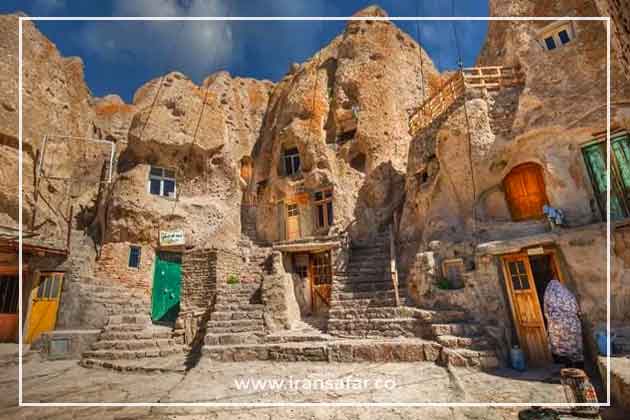
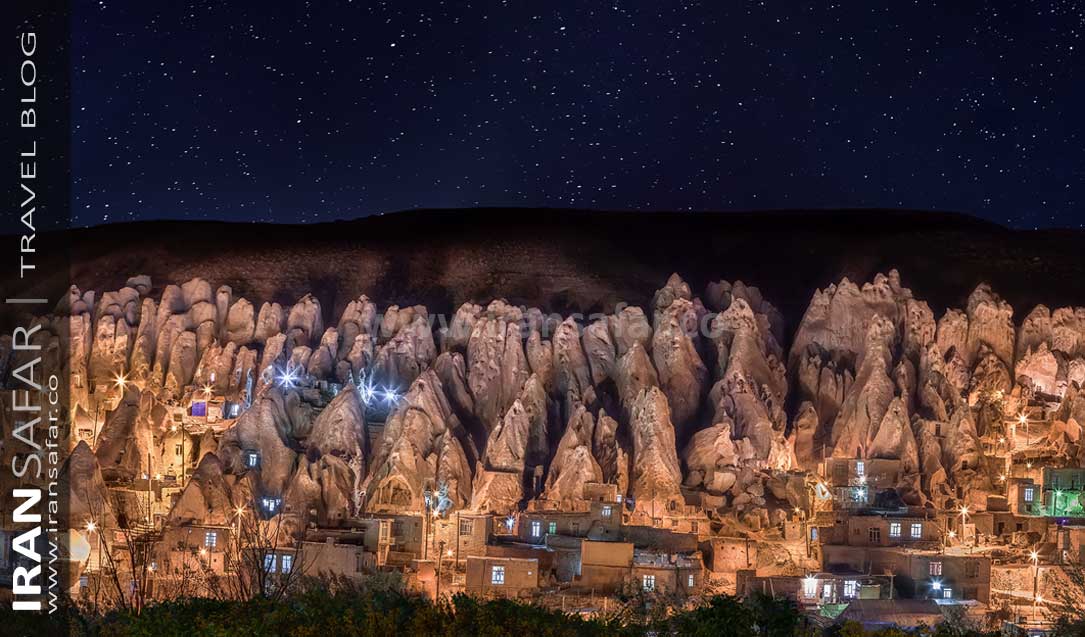
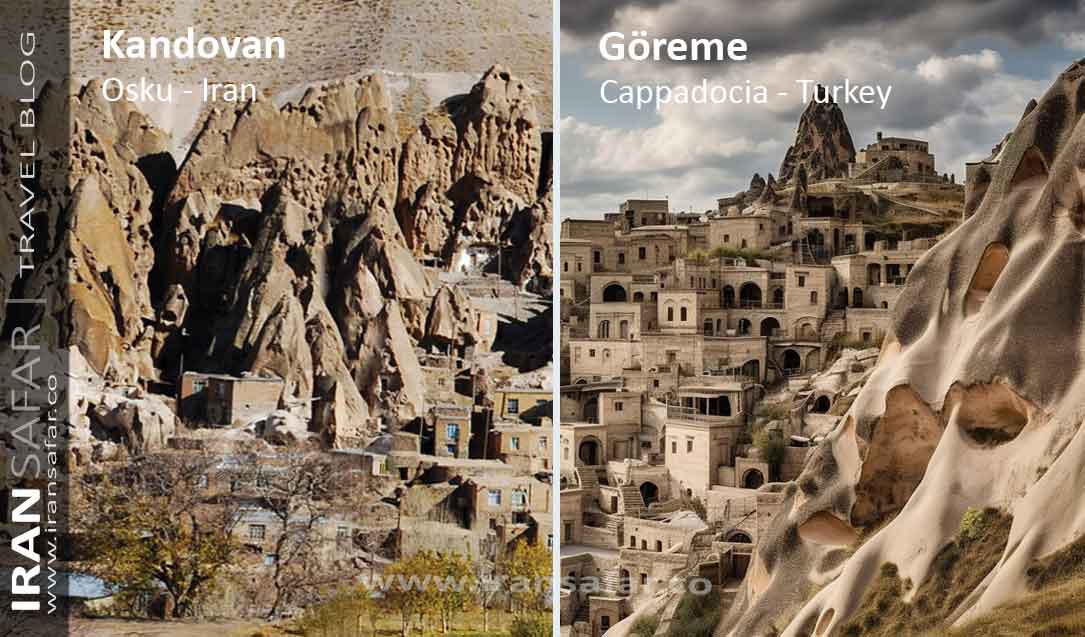

Hello, we stayed at Kandovan Laleh hotel which is very nice and lovely. You really like the atmosphere of the hotel and its view and the whole atmosphere of the beautiful Kandavan. We were there in the summer season when the weather is mild and pleasant. I suggest you go there at least once because it will be unique experience. The quality of the food was also good. The weak point of the hotel is the breakfast, which is very poor, and the housekeeping could be better; but it was acceptable in general.